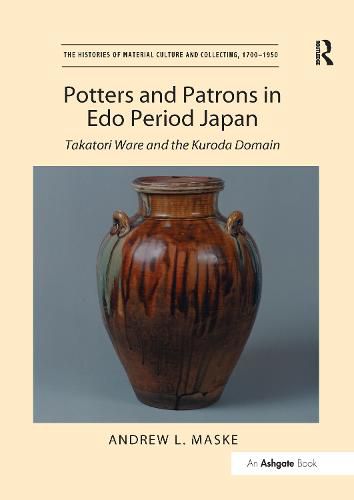Readings Newsletter
Become a Readings Member to make your shopping experience even easier.
Sign in or sign up for free!
You’re not far away from qualifying for FREE standard shipping within Australia
You’ve qualified for FREE standard shipping within Australia
The cart is loading…






Potters and Patrons in Edo Period Japan: Takatori Ware and the Kuroda Domain traces the development of one of Japan’s best-documented ceramic types, from its beginnings around 1600 until the abolition of the domain system in 1871. Using historical records, archaeological material from early kilns and consumer sites, and the results of comparative chemical analysis, this study explores the operation of Takatori as the official ceramic workshop of the Kuroda, lords of one of the largest domains in Japan.
Spanning cultural, aesthetic, economic and practical aspects, this book presents Takatori ware as an ideal archetype with which to compare developments in elite ceramics in other parts of Japan throughout the Edo period. In addition to its scholarly examination of the operation of a domain-sponsored ceramics workshop over more than 250 years, the book includes illustrations of examples from each of the seven Takatori workshop locations, including beautiful pieces that have never before appeared in print.
$9.00 standard shipping within Australia
FREE standard shipping within Australia for orders over $100.00
Express & International shipping calculated at checkout
Potters and Patrons in Edo Period Japan: Takatori Ware and the Kuroda Domain traces the development of one of Japan’s best-documented ceramic types, from its beginnings around 1600 until the abolition of the domain system in 1871. Using historical records, archaeological material from early kilns and consumer sites, and the results of comparative chemical analysis, this study explores the operation of Takatori as the official ceramic workshop of the Kuroda, lords of one of the largest domains in Japan.
Spanning cultural, aesthetic, economic and practical aspects, this book presents Takatori ware as an ideal archetype with which to compare developments in elite ceramics in other parts of Japan throughout the Edo period. In addition to its scholarly examination of the operation of a domain-sponsored ceramics workshop over more than 250 years, the book includes illustrations of examples from each of the seven Takatori workshop locations, including beautiful pieces that have never before appeared in print.